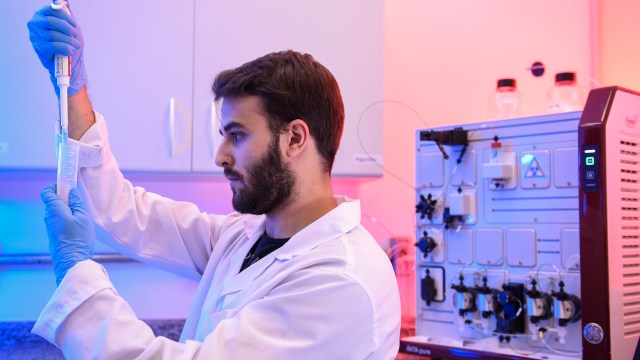Predicting PTSD symptoms becomes possible with a new test

Image source: camillo jimenez/Unsplash
- 10-15% of people visiting emergency rooms eventually develop symptoms of long-lasting PTSD.
- Early treatment is available but there’s been no way to tell who needs it.
- Using clinical data already being collected, machine learning can identify who’s at risk.
The psychological scars a traumatic experience can leave behind may have a more profound effect on a person than the original traumatic experience. Long after an acute emergency is resolved, victims of post-traumatic stress disorder (PTSD) continue to suffer its consequences.
In the U.S. some 30 million patients are annually treated in emergency departments (EDs) for a range of traumatic injuries. Add to that urgent admissions to the ED with the onset of COVID-19 symptoms. Health experts predict that some 10 percent to 15 percent of these people will develop long-lasting PTSD within a year of the initial incident. While there are interventions that can help individuals avoid PTSD, there’s been no reliable way to identify those most likely to need it.
That may now have changed. A multi-disciplinary team of researchers has developed a method for predicting who is most likely to develop PTSD after a traumatic emergency-room experience. Their study is published in the journal Nature Medicine.

Image source: Creators Collective/Unsplash
Study lead author Katharina Schultebraucks of Columbia University’s Department Vagelos College of Physicians and Surgeons says:
“For many trauma patients, the ED visit is often their sole contact with the health care system. The time immediately after a traumatic injury is a critical window for identifying people at risk for PTSD and arranging appropriate follow-up treatment. The earlier we can treat those at risk, the better the likely outcomes.”
The new PTSD test uses machine learning and 70 clinical data points plus a clinical stress-level assessment to develop a PTSD score for an individual that identifies their risk of acquiring the condition.
Among the 70 data points are stress hormone levels, inflammatory signals, high blood pressure, and an anxiety-level assessment. Says Schultebraucks, “We selected measures that are routinely collected in the ED and logged in the electronic medical record, plus answers to a few short questions about the psychological stress response. The idea was to create a tool that would be universally available and would add little burden to ED personnel.”
Researchers used data from adult trauma survivors in Atlanta, Georgia (377 individuals) and New York City (221 individuals) to test their system.
Of this cohort, 90 percent of those predicted to be at high risk developed long-lasting PTSD symptoms within a year of the initial traumatic event — just 5 percent of people who never developed PTSD symptoms had been erroneously identified as being at risk.
On the other side of the coin, 29 percent of individuals were ‘false negatives,” tagged by the algorithm as not being at risk of PTSD, but then developing symptoms.

Image source: Külli Kittus/Unsplash
Schultebraucks looks forward to more testing as the researchers continue to refine their algorithm and to instill confidence in the approach among ED clinicians: “Because previous models for predicting PTSD risk have not been validated in independent samples like our model, they haven’t been adopted in clinical practice.” She expects that, “Testing and validation of our model in larger samples will be necessary for the algorithm to be ready-to-use in the general population.”
“Currently only 7% of level-1 trauma centers routinely screen for PTSD,” notes Schultebraucks. “We hope that the algorithm will provide ED clinicians with a rapid, automatic readout that they could use for discharge planning and the prevention of PTSD.” She envisions the algorithm being implemented in the future as a feature of electronic medical records.
The researchers also plan to test their algorithm at predicting PTSD in people whose traumatic experiences come in the form of health events such as heart attacks and strokes, as opposed to visits to the emergency department.





